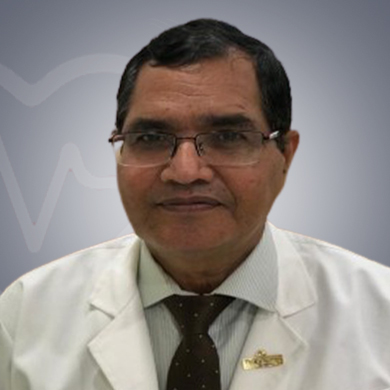
Orthopaedics & Joint Replacement Surgeon
Sarvodaya Hospital and Research Centre , Faridabad, India37 Years of experience
Speaks: English
Dr. IP Arora treats a long list of conditions such as:
It is for the issues or injuries in the musculoskeletal system for which patients consult this doctor. This includes conditions or injuries in the bones, ligaments, joints or tendons. The aptitude of the surgeon, their ability to constantly learn and adapt to newer developments in treatment are also as important as their education, skills and experience.
Please find below the signs and symptoms seen when their is an orthopedic injury or condition.:
Patients who have orthopedic or musculoskeletal issues usually have multiple symptoms. You must consult an orthopedic surgeon at the earliest if you are having pain in the joints or muscles and swelling. The range of motion is restricted in the affected area if you are having injury or condition of this kind.
8 am to 4 pm, Monday to Saturday are the operating hours of the doctor.. It is only a skillful and efficient doctor that is able to do these procedures very well.
Here is a list of popular procedures performed by Dr. IP Arora.:
An orthopedic surgeon is someone who helps patients with conditions such as dislocated joints, back pain or arthritis get healthier. Irrespective of the kind of orthopedic condition whether, acute, degenerative or chronic, an orthopedic surgeon helps you get treated with any of them. There is quite a bit of sub specialisation seen in this specialty considering that there is a lot of scope to work with in the orthopedic field.

Share Your Experience about Dr. IP Arora

Prior to and during the consultation with the orthopedic surgeon, please get the relevant tests done, the whole list of whom is listed below.:
Basis the tests, the doctor can get a more accurate picture of the severity and reasons behind the condition and the best treatment to be done. It is both the screening tests and the diagnostic tests that help the doctor find out how well prepared the patient is for the upcoming treatment. It is the physical tests which will help the doctor know better how effective the treatment has been..
An orthopedic surgeon is someone you are usually referred to by your doctor when it is determined post tests and consultation that you need an orthopedic procedure to resolve your health condition. The orthopedic surgeon helps you manage your entire treatment process from the pre operative to the procedure to the post operative part of the healing as well. The orthopedic surgeon can guide you through the rehabilitation process making it more effortless and seamless. They prescribe the medicines that would support your orthopedic treatment process and you as well as recommend the right tests that need to be done.